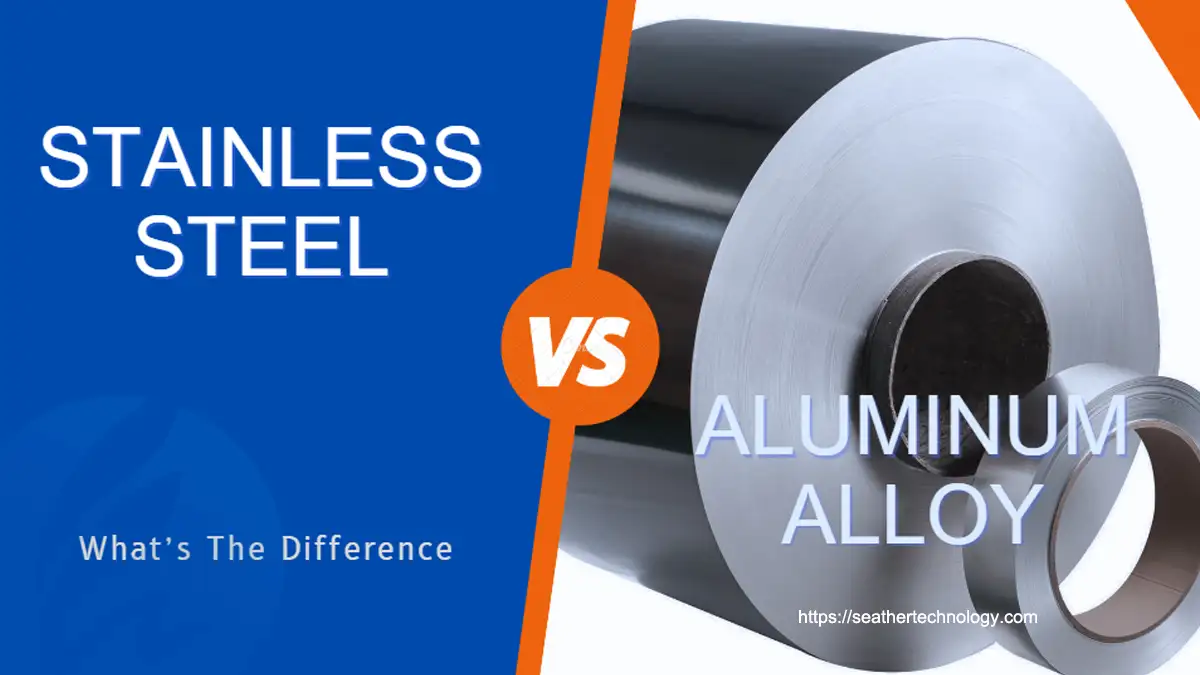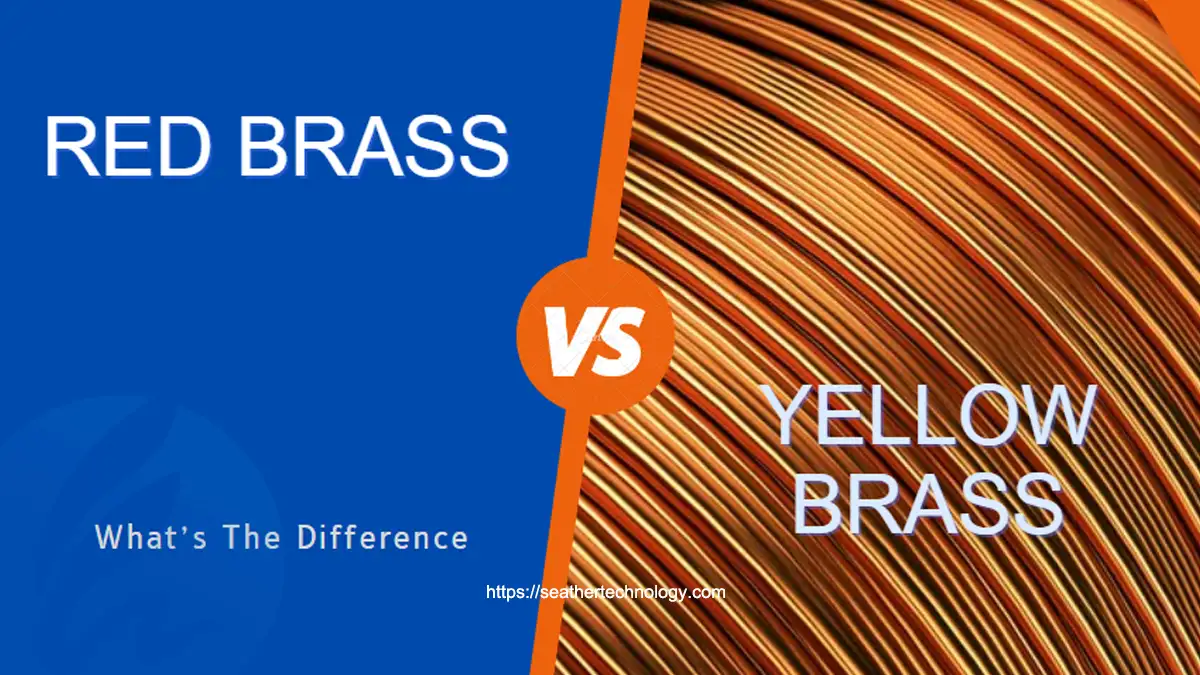Alloys Knowledge Center
SEATHER is dedicated to disseminating alloys knowledge, making these superior alloy and stainless steel materials accessible to global users. Stay with us and you will learn more about it!
SEATHER is an expert that provides in-depth knowledge about alloys and stainless steel products to its users.
We believe that these superior materials should be accessible to everyone, which is why we strive to educate our users about the properties and uses of these materials.
With SEATHER, you can learn more about the different types of alloys and stainless steels, as well as their gardes, unique features, industries applications and benefits.
Whether you are a professional in the industry or simply interested in these alloys materials, SEATHER is a great resource to expand your knowledge and stay up-to-date with the latest developments in the field.
- Professional Specialist
- Brilliant Ideas
- Prime Quality
- 24/7 Assiatance

A
Aluminum alloy is a type of metallic substance that primarily consists of the alloy aluminum and may also contain other chemical contents like: copper, magnesium, manganese, silicon, or zinc. The specific composition and relative proportions of these elements determine the particular type of alloy. The normal grades are 1050, 1060, 1070, 1350, 3003, etc.
Grade 1060 aluminium alloy is an aluminium-based alloy in the “commercially pure” wrought family (1000 or 1xxx series).
Aluminium alloy 6063 is a medium strength alloy commonly referred to as an architectural alloy. It is normally used in intricate extrusions.
It has a good surface finish, high corrosion resistance, is readily suited to welding and can be easily anodised. Most commonly available as T6 temper, in the T4 condition it has good formability.
6063 aluminum alloy is often used in applications such as railing, frames, shop fittings, irrigation tubing, building products, electrical, marine, piping systems, recreation equipment, storage tanks, truck frames & trailers.
B
Base copper describes the copper layer on the raw circuit board base material in the delivery state. This forms the starting point for later copper structures. It is common, for example, to start with standard 35um with a base copper of 18um. The missing 17um are built up by through-plating and amplification. Base copper thicknesses of 18um, 35um, and 50um are common for rigid circuit boards. For thick copper boards, even higher base copper is sometimes used. For flexible printed circuit boards, 12um, 18um, and 35um are common.
C
Unlike pure copper, copper alloys are complex formulations of metal with a copper base and alloy elements such as nickel, aluminum, silicon, tin, and zinc in varying concentrations that give the alloy desired properties.
Grade C1100 pure copper is universal for electrical industries and has a minimum conductivity rating of 100% IACS and is required to be 99.90% pure.
Grade C1100 copper foil strip is made by rolling copper to a very thin thickness (between 0.0015mm and 0.3mm) and then cold-rolling or hot rolling depending on the required thickness. This can be followed by annealing (for even greater flexibility) and further processed into strips or laminated sheets with insulation materials.
Grade C1100 pure copper foils are used in dry-type transformers and small transformers, where they are wound together with insulating materials.
D
Stainless steel density signifies the mass of the substance within a given unit of volume.
This property is a characteristic feature of stainless steel, with its density typically falling between 7.6 g/cm³ and 8.0 g/cm³.
Stainless steel is a widely utilized material composed of a minimum of 10.5% Chromium, along with other elements that combine to create its distinct structure.
These components includes Carbon, Silicon, Manganese, Phosphorus, Sulfur, Nickel, Molybdenum, Titanium and Copper. This steel is recognized for its exceptional strength and remarkable resistance to corrosion.
Variations in chemical compositions and their proportions determine the distinct densities of different stainless steel grades.
Among the stainless steel grades, 304 and 316L are the most commonly used materials with differing densities.
Consequently, the computation of stainless steel weight differs between 304 and 316 stainless steel.
Aluminum and its alloy have low densities; therefore, it is most widely used in the aviation industry. Due to its unique properties, aluminum is used in a wide range of applications. The density of aluminum is 2.71 g/cm3 or 2710 kg/m3, and it is 1/3 of the stainless steel.
Due to the density difference, aluminum alloy is lighter than stainless steel but not far behind in strength.
DIN is the German industry standard.
E
A mechanical property of metal that is the degree to which a material may be bent, stretched, or compressed before it ruptures. It is a point between tensile strength and yield strength and is expressed as a percentage of the original length.
F
Flexural strength is a term used in statics.
G
GH4169 alloy is a nickel-based superalloy extensively used in the aircraft engine industrybecause of its excellent mechanical properties and good fabrication ability.
The GH4169 alloy could provide operational conditions up to a maximum useful service temperature of about 650 °C to meet the requirements of the rotor components. For instance, a high tensile strength, fracture toughness, oxidation resistance and excellent stress rupture resistance are attained.
H
Hastelloy is a nickel-based corrosion-resistant alloy, mainly divided into the nickel-chromium alloy and nickel-chromium molybdenum alloy two categories.
Hastelloy has good corrosion resistance and thermal stability and is used in the aviation industry and chemical field. Hastelloy plates are suitable for use in a variety of chemical industries containing oxidizing and reducing media.
Application areas, heat exchangers, bellows compensators, chemical equipment, flue gas desulfurization and denitrification, paper industry, aerospace applications, acidic environment.
Alloy hardness is a characteristic that determines the surface wear and abrasive resistance. The ability of a material to resist denting from impact is related to hardness as well as a material’s ductility.
In general, different materials differ in their hardness; for example hard metals such as titanium and beryllium are harder than soft metals such as sodium and metallic tin, or wood and common plastics.
I
Inconel alloys are oxidation-corrosion-resistant materials well suited for service in extreme environments subjected to pressure and heat.
When heated, Inconel forms a thick, stable, passivating oxide layer protecting the surface from further attack.
Inconel retains strength over a wide temperature range, attractive for high temperature applications where aluminum and steel would succumb to creep as a result of thermally induced crystal vacancies. Inconel’s high temperature strength is developed by solid solution strengthening or precipitation hardening, depending on the alloy.
Inconel alloys are typically used in high temperature applications.
Common trade names for Inconel alloys include: Inconel 625, Inconel 718, Inconel X-750.
Incoloy refers to a range of superalloys produced by the Special Metals Corporation group of companies.
They are mostly nickel-based, and designed for excellent corrosion resistance as well as strength at high temperatures.
J
Japanese Industrial Standards (JIS) are the standards used for industrial activities in Japan, coordinated by the Japanese Industrial Standards Committee (JISC) and published by the Japanese Standards Association (JSA). The JISC is composed of many nationwide committees and plays a vital role in standardizing activities across Japan.
K
L
M
Monel is a group of nickel alloys, primarily composed of nickel (up to 67%) and copper, with small amounts of iron, manganese, carbon, and silicon.
Stronger than pure nickel, Monel alloys are resistant to corrosion by many agents, including rapidly flowing seawater. They can be fabricated readily by hot- and cold-working, machining, and welding.
Monel was created by Robert Crooks Stanley, who worked for the International Nickel Company (INCO) in 1901. Monel alloy 400 is a binary alloy of the same proportions of nickel and copper as is found naturally in the nickel ore from the Sudbury (Ontario) mines and is therefore considered a puritan alloy. Monel was named after company president Ambrose Monel, and patented in 1906. One L was dropped, because family names were not allowed as trademarks at that time. The name is now a trademark of Special Metals Corporation.
It is a very expensive alloy, with cost ranging from 5 to 10 times the cost of copper and nickel, hence its use is limited to those applications where it cannot be replaced with cheaper alternatives. Compared to carbon steel, piping in Monel is more than 3 times as expensive.
As with most alloys, the melting point of stainless steel is expressed in the form of a range of temperatures, and not a single temperature. This temperature range goes from 1,400 to 1,530 °C (2,550 to 2,790 °F; 1,670 to 1,800 K; 3,010 to 3,250 °R) depending on the specific consistency of the alloy in question.
N
The term nickel alloy refers to a metal that has nickel as one of its primary elements. There are many different nickel alloys, and new ones are being created or developed all the time.
Some types of nickel alloys are referred to as superalloys because of their superior oxidation and creep resistance, allowing them to be used at temperatures of more than half their melting points.
O
The outer diameter (OD) of a hollow circular pipe is the measurement of the outside edges of the pipe passing through its center. The outer diameter of a pipe, together with its wall thickness, are essential to inside diameter calculations.
P
Pickling is the process used to remove weld heat tinted layers from the surface of stainless steel fabrications.
Q
In materials science, quenching is the rapid cooling of a workpiece in water, gas, oil, polymer, air, or other fluids to obtain certain material properties.
A type of heat treating, quenching prevents undesired low-temperature processes, such as phase transformations, from occurring.
It does this by reducing the window of time during which these undesired reactions are both thermodynamically favorable and kinetically accessible; for instance, quenching can reduce the crystal grain size of both metallic and plastic materials, increasing their hardness.
R
S
Stainless steel, also known as Inox, corrosion-resistant steel (CRES) and rustless steel, is an alloy of iron that is resistant to rusting and corrosion. It contains at least 10.5% chromium and usually nickel, and may also contain other elements, such as carbon, to obtain the desired properties. Stainless steel’s resistance to corrosion results from the chromium, which forms a passive film that can protect the material and self-heal in the presence of oxygen.
The alloy’s properties, such as luster and resistance to corrosion, are useful in many applications. Stainless steel can be rolled into sheets, plates, bars, wire, and tubing. These can be used in cookware, cutlery, surgical instruments, major appliances, vehicles, construction material in large buildings, industrial equipment (e.g., in paper mills, chemical plants, water treatment), and storage tanks and tankers for chemicals and food products.
Different types of stainless steel are labeled with an AISI three-digit number. The ISO 15510 standard lists the chemical compositions of stainless steels of the specifications in existing ISO, ASTM, EN, JIS, and GB standards in a useful interchange table.
T
Titanium alloys are alloys that contain a mixture of titanium and other chemical elements. Such alloys have very high tensile strength and toughness (even at extreme temperatures).
They are light in weight, have extraordinary corrosion resistance and the ability to withstand extreme temperatures.
However, the high cost of both raw materials and processing limit their use to military applications, aircraft, spacecraft, bicycles, medical devices, jewelry, highly stressed components such as connecting rods on expensive sports cars and some premium sports equipment and consumer electronics.
Although “commercially pure” titanium has acceptable mechanical properties and has been used for orthopedic and dental implants, for most applications titanium is alloyed with small amounts of aluminium and vanadium, typically 6% and 4% respectively, by weight. This mixture has a solid solubility which varies dramatically with temperature, allowing it to undergo precipitation strengthening. This heat treatment process is carried out after the alloy has been worked into its final shape but before it is put to use, allowing much easier fabrication of a high-strength product.
U
V
Vickers hardness, a measure of the hardness of a material, calculated from the size of an impression produced under load by a pyramid-shaped diamond indenter.
Devised in the 1920s by engineers at Vickers, Ltd., in the United Kingdom, the diamond pyramid hardness test, as it also became known, permitted the establishment of a continuous scale of comparable numbers that accurately reflected the wide range of hardnesses found in steels.
X
Grade X22CrMoV12-1 stainless steel is also called 1.4923 stainless steel.
Grade X22CrMoV12-1 stainless steel is a combination of chromium, molibdenium, vanadium, nickel elements.
Due to the addition of vanadium it has an increased creep rupture strength. Scale oxide resistance up to approximately 600°C. The corrosion resistance in natural environment is limited due to the relatively low chromium content.
Grade X22CrMoV12-1 stainless steel is widely used in turbine construction, aerospace and for pressure and steam boiler.
Y
Yield strength is defined as the maximum stress material will tolerate before plastic deformation begins.
The term “yield strength” is typically used in the context of ductile materials, or materials that can deform.
Z
irconium alloys are solid solutions of zirconium or other metals, a common subgroup having the trade mark Zircaloy.
Zirconium has very low absorption cross-section of thermal neutrons, high hardness, ductility and corrosion resistance. One of the main uses of zirconium alloys is in nuclear technology, as cladding of fuel rods in nuclear reactors, especially water reactors.
A typical composition of nuclear-grade zirconium alloys is more than 95 weight percent zirconium and less than 2% of tin, niobium, iron, chromium, nickel and other metals, which are added to improve mechanical properties and corrosion resistance.
More Alloys Resources
Seather provides a quite wide range of alloy and stainless steel products to our worldwide users. Our powerful sourcing and supply help cater for all your custom demands.

Aluminum Casting: A Guide for Beginners & Experts
Aluminum is a metal that is really abundant in today’s time and it is also one of the most useful and important metals for the

Aluminum Welding: A Guide for Beginners & Experts
The welding of the aluminum is an easy task for the beginners and experts. Beginners face some challenges because the welding of Aluminum requires specific

Stainless Steel vs. Aluminum Alloy: What’s the Difference?
Stainless steel and aluminum alloy are most widely used in industry and domestic purposes. Many things around you, from your house to your office, kitchenware

Stainless Steel vs. Nickel Based Alloy: A Comprehensive Comparison
Stainless steel is an iron-based alloy that contains chromium and nickel as the main alloy elements, along with other elements such as carbon, magnesium, sulfur,

Red Brass vs. Yellow Brass: What’s the Difference?
Brass is a unique alloy of copper and zinc. It is most commonly used in many applications due to its outstanding properties. Brass is categorized

6061 Aluminum vs. 6063 Aluminum: What’s the Difference?
Aluminum is a versatile material used very commonly these days due to its excellent properties and reasonable price. Aluminum alloys are divided into different grades
Start Customized Your Alloys & Stainless Steels
Contact us today and we’ll put together a quote tailored to your needs.

